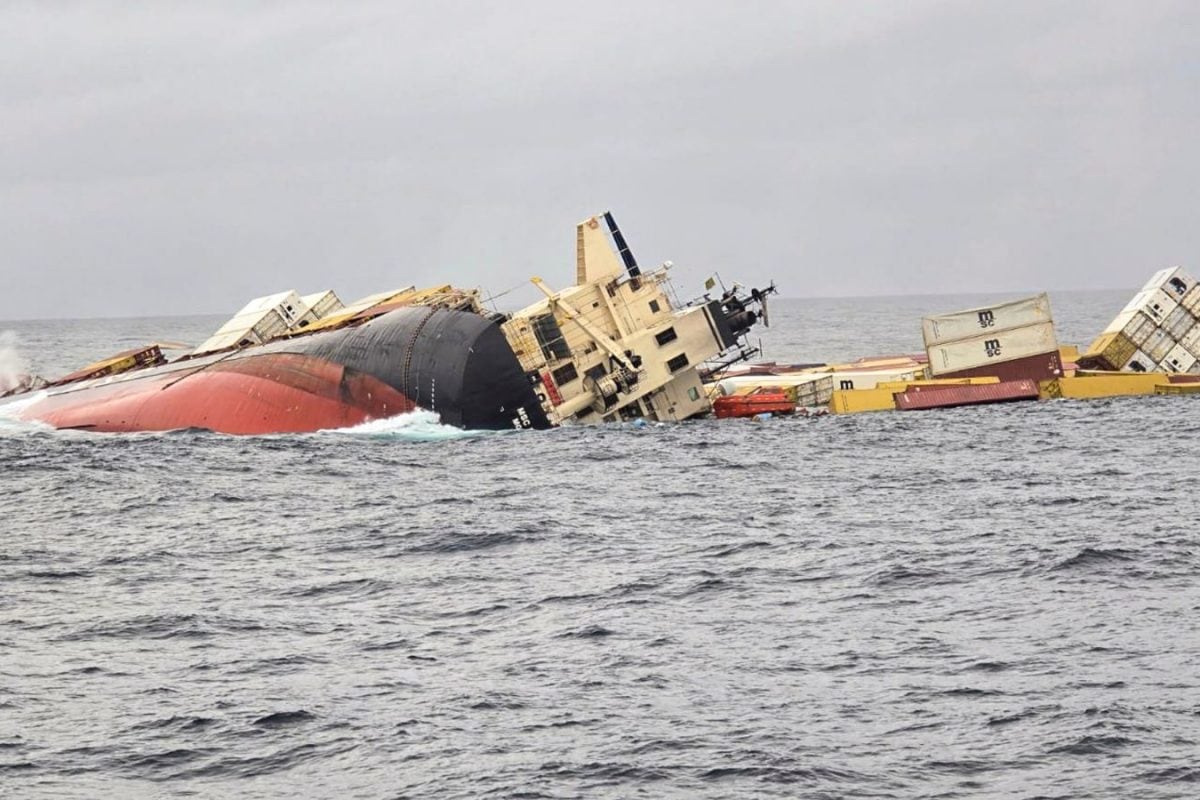

In response to the recent sinking of the container vessel MSC Elsa 3 off the coast of Kochi, India, a team of scientists has embarked on a 10-day research cruise to investigate the potential environmental impacts of the hazardous cargo aboard the vessel. The incident, which occurred earlier this month, has raised significant concerns due to the presence of toxic substances within the ship's cargo manifest.
The research cruise, led by the Centre for Marine Living Resources and Ecology (CMLRE) under the Ministry of Earth Sciences (MoES), commenced on June 3, 2025, and will continue until June 12, 2025. The area of study encompasses a carefully mapped section of the southeastern Arabian Sea, with particular attention to the wreck site located at 09°18.76'N and 076°08.12'E. The study area includes 16 research stations arranged in two meridional transects, spaced 10 nautical miles apart, providing zonal coverage of the region directly surrounding the sunken vessel.
The primary objective of this scientific expedition is to conduct a comprehensive assessment of the incident's impact on marine life, fisheries, and the chemical composition of the surrounding waters and sediments. The team will closely monitor biogeochemical and ecological parameters in the shipwreck area, along with regional hydrography and ocean currents, utilizing state-of-the-art instruments and methodologies. These instruments will aid in understanding the physical structure and water circulation patterns within the impacted zone, which is crucial for tracking the dispersion of pollutants. The team will operate high-end acoustic systems such as the Long-Range SONAR SX90 and multiple frequency split-beam echo sounders. These tools will assist in locating the wreck and in mapping the area and water column disturbances, as well as identifying fish schools or other biological activity.
The urgency of this research stems from the nature of the cargo carried by the MSC Elsa 3. The ship was carrying 643 containers, including 13 identified as containing hazardous materials. Of particular concern is the presence of calcium carbide, which reacts dangerously with water, producing acetylene gas, a flammable and explosive substance. The vessel also carried substantial quantities of diesel (84 metric tons) and furnace oil (367 metric tons), both classified as marine pollutants due to their toxicity to marine life and potential to contaminate coastal ecosystems.
Concerns have been raised about the potential for these hazardous materials to leak into the surrounding waters, threatening the delicate marine ecosystem of the Arabian Sea. The Kerala State Disaster Management Authority had previously issued a public warning about the possibility of cargo, including containers and oil, washing ashore. The Indian Coast Guard has deployed spill detection systems and has been actively monitoring the affected area.
The Central Marine Fisheries Research Institute (CMFRI) has also launched a parallel study to assess the shipwreck's impact on the marine environment. Four teams of scientists have been deployed across several districts to collect water, phytoplankton, and sediment samples for analysis. These teams are monitoring water quality parameters, including dissolved oxygen content, pH levels, and nutrient concentrations. They are also assessing the presence of oil and grease in the water and soil to detect any potential oil spills. The CMFRI teams are also collecting and testing benthic organisms in the coastal soil.
The investigations are especially crucial as the Arabian Sea along the Kerala coast is not only a busy trade route but also a biodiversity hotspot and a vital source of livelihood for numerous fishing communities. The potential for long-term ecological and economic damage from an oil and chemical spill is significant. Experts emphasize the need for long-term monitoring to assess the full extent of the environmental impact, particularly the potential accumulation of toxic substances like polycyclic aromatic hydrocarbons (PAHs) in the marine food chain.